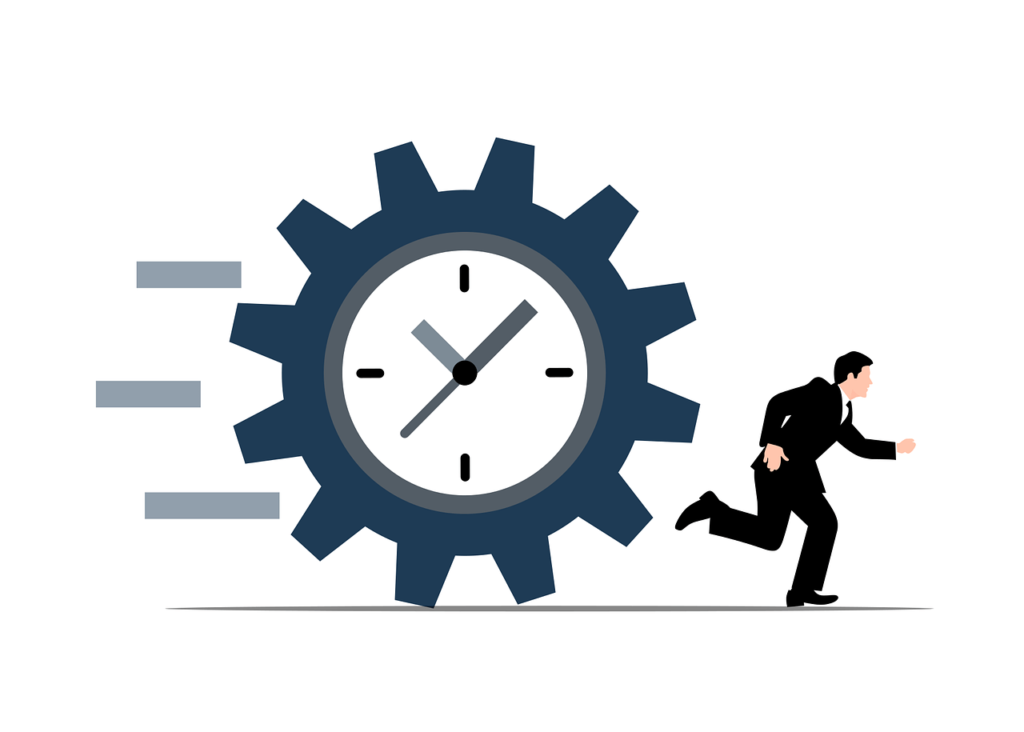In today’s fast-paced world, it’s no surprise that stress has become a common companion in our lives. However, understanding how to effectively manage stress is crucial for maintaining our mental health and overall well-being. That’s why stress management workshops have gained popularity as they offer valuable strategies to combat stress and lead a more balanced life. From mindfulness exercises to time management techniques, these workshops aim to equip you with practical tools that can make a significant difference in managing and reducing stress. Joining a stress management workshop might just be the key to restoring inner peace and achieving a healthier mindset.

This image is property of pixabay.com.
Mindfulness and Meditation
Benefits of mindfulness and meditation
Practicing mindfulness and meditation can have numerous benefits for your mental and physical well-being. It helps you develop a greater sense of self-awareness and allows you to tune in to the present moment, leading to a reduction in stress and anxiety. By focusing on your breath, sensations, and thoughts without judgment, you can cultivate a sense of calmness and inner peace. Regular mindfulness and meditation practice can also improve concentration, enhance emotional regulation, boost creativity, and promote better overall mental health.
Different types of mindfulness and meditation practices
Mindfulness and meditation come in various forms, allowing you to find a practice that resonates with you. One popular technique is mindfulness meditation, which involves paying attention to your breath and bringing your awareness to the present moment. Another type is loving-kindness meditation, where you cultivate feelings of love, compassion, and kindness towards yourself and others. Guided meditation involves listening to a recording or following an app that provides instructions to help you relax and focus. Body scan meditation, walking meditation, and transcendental meditation are other techniques you can explore.
Techniques for incorporating mindfulness and meditation into daily routine
Incorporating mindfulness and meditation into your daily routine doesn’t have to be time-consuming or complicated. Start by setting aside just a few minutes each day to sit quietly and take a few deep breaths. Gradually increase the duration as you become more comfortable. You can also integrate mindfulness into everyday activities by savoring each bite of a meal, pausing to notice your surroundings, or taking a moment to appreciate the beauty of nature. Consider using mobile apps or online resources that offer guided meditations and mindfulness exercises for added convenience and support. The key is to find a practice that works for you and commit to making it a regular part of your routine.
Physical Exercise and Activity
The link between physical activity and stress reduction
Engaging in regular physical exercise and activity is a powerful way to manage and reduce stress. Exercise releases endorphins, also known as the “feel-good” hormones, which promote a sense of well-being and happiness. It helps increase blood flow to the brain, improving cognitive function and reducing symptoms of anxiety and depression. Physical activity also provides a healthy outlet for releasing pent-up energy and tension. Additionally, exercise can enhance your overall resilience to stress by improving sleep quality, boosting self-confidence, and increasing your ability to cope with challenges.
Effective exercises for stress relief
When it comes to stress relief, various exercises can help you unwind and release tension. Aerobic activities such as jogging, swimming, or cycling are excellent choices as they elevate your heart rate and stimulate the production of endorphins. Yoga combines physical movement with deep breathing and mindfulness, making it a holistic practice for stress management. Strength training exercises like lifting weights or using resistance bands can also be beneficial for relieving stress by improving muscular strength and promoting a sense of accomplishment. Find activities that you enjoy and that suit your fitness level, and aim for at least 150 minutes of moderate-intensity exercise each week.
Creating a regular exercise routine
To incorporate exercise into your daily life, it’s essential to establish a regular routine. Start by choosing activities that you genuinely enjoy, as this will help you stay motivated and committed. Set realistic goals and gradually increase the duration and intensity of your workouts over time. Find a schedule that works for you and block off dedicated time for exercise in your calendar. Consider joining fitness classes, sports clubs, or workout groups to make exercise more social and enjoyable. Remember, consistency is key, so prioritize physical activity as you would any other important aspect of your life to maintain a healthy body and mind.

This image is property of pixabay.com.
Healthy Lifestyle Habits
Importance of a balanced diet and proper nutrition
A balanced diet and proper nutrition play a vital role in managing stress and supporting overall well-being. Consuming a variety of nutrient-dense foods provides your body with the necessary vitamins, minerals, and antioxidants to function optimally. Avoid excessive consumption of processed foods, sugary snacks, and beverages that can lead to energy crashes and mood swings. Instead, focus on incorporating whole grains, lean proteins, fruits, vegetables, and healthy fats into your meals. Eating regular, well-balanced meals can stabilize blood sugar levels and prevent extreme hunger or the overconsumption of unhealthy foods, which can contribute to increased stress.
Tips for getting enough sleep and maintaining a regular sleep schedule
Getting sufficient sleep is crucial for effective stress management. Lack of sleep can exacerbate stress and make it more challenging to cope with daily demands. Establish a consistent sleep schedule by going to bed and waking up at the same time every day, even on weekends. Create a relaxing bedtime routine to signal to your body that it’s time to wind down, such as taking a warm bath, reading a book, or practicing gentle stretching or meditation. Ensure your sleep environment is comfortable, quiet, and free from distractions. Limit exposure to electronic devices before bed, as the blue light emitted by screens can disrupt your sleep patterns. Aim for 7-9 hours of quality sleep each night to feel refreshed and rejuvenated.
Avoiding excessive caffeine, alcohol, and tobacco
While it may be tempting to reach for caffeine, alcohol, or tobacco when stressed, these substances can actually worsen the impact of stress on your body and mind. Caffeine, found in coffee, tea, energy drinks, and soda, is a stimulant that can increase anxiety and disrupt sleep patterns. Excessive alcohol consumption can also interfere with your sleep and mood, leading to increased feelings of stress and irritability. Tobacco products contain nicotine, which stimulates the release of stress hormones and can contribute to feelings of restlessness and anxiety. Instead of relying on these substances as stress relievers, opt for healthier alternatives like herbal tea, water, or engaging in stress-reducing activities mentioned earlier.
Time Management
Prioritizing tasks and setting realistic goals
Effective time management is essential for reducing stress and feeling in control of your daily life. Begin by identifying your most important tasks and priorities. Make a to-do list and rank your tasks in order of importance. Focus on completing the most critical tasks first and break larger tasks into smaller, more manageable steps. Set realistic goals that align with your available time and energy levels. Avoid overcommitting or taking on more than you can handle, as this can lead to stress and burnout. By prioritizing and setting achievable goals, you can reduce feelings of overwhelm and improve your productivity.
Effective strategies for managing time and reducing stress
Implementing strategies to manage your time effectively can significantly reduce stress and improve your overall well-being. One helpful technique is the Pomodoro Technique, where you work in focused bursts of 25 minutes followed by short breaks. This approach can enhance efficiency and prevent burnout. Another strategy is to batch similar tasks together, such as responding to emails or making phone calls, to minimize context switching and maximize productivity. Delegate tasks when possible and learn to say no to commitments that don’t align with your priorities. Utilize technology tools, such as online calendars, task management apps, and productivity trackers, to keep track of deadlines and stay organized.
Tools and techniques for improving time management skills
There are numerous tools and techniques available to help improve your time management skills. Digital calendars, such as Google Calendar or Microsoft Outlook, can help you schedule and keep track of appointments and deadlines. Task management apps like Todoist or Trello can help you organize your to-do lists, set reminders, and collaborate with others. Time tracking tools like RescueTime or Toggl can provide insights into how you spend your time and help you identify areas where adjustments can be made. Experiment with different tools and techniques to find what works best for you, and consider seeking out time management workshops or courses to further enhance your skills.

This image is property of pixabay.com.
Social Support and Relationships
The role of social support in stress management
Building and maintaining strong social connections plays a crucial role in managing stress and promoting good mental health. Social support from friends, family, and loved ones provides comfort, encouragement, and a sense of belonging. It helps to share your thoughts and emotions with trusted individuals who can offer valuable perspectives and advice. Social support can also provide practical help, such as assisting with tasks or providing a listening ear during challenging times. By nurturing positive relationships, you can increase your resilience to stress, enhance your overall well-being, and feel more supported and understood.
Ways to build and strengthen relationships
Developing meaningful relationships takes time and effort, but the rewards are immense. Start by being proactive in reaching out to friends, family, and acquaintances. Attend social events, join clubs or organizations that align with your interests, or volunteer for causes you care about to meet like-minded individuals. Show a genuine interest in others by actively listening, being empathetic, and offering support when needed. Nurture your relationships by regularly checking in, scheduling meetups or virtual hangouts, and engaging in activities together. Remember to reciprocate support and be there for others in their times of need. Building and strengthening relationships will not only enrich your life but also provide a valuable buffer against stress.
Seeking support from friends, family, or support groups
During times of increased stress, don’t hesitate to reach out to your support network. Sharing your concerns, worries, or frustrations with trusted friends and family members can provide emotional relief and different perspectives. Engage in open and honest conversations, and don’t be afraid to ask for help or advice. Support groups, whether online or in-person, can also be a valuable resource. They provide a safe and understanding environment where you can connect with others who are experiencing similar challenges. Sharing experiences, insights, and coping strategies within a support group can offer validation, comfort, and a sense of community.
Cognitive Restructuring
Understanding the connection between thoughts, emotions, and stress
Cognitive restructuring involves examining and challenging negative thought patterns that contribute to stress and adopting more positive and realistic thinking styles. Our thoughts have a significant impact on our emotions, and when left unexamined, negative or irrational thoughts can amplify stress and anxiety. By becoming aware of our cognitive distortions, we can work towards reframing them and cultivating more constructive thinking patterns. Recognizing that our thoughts are not necessarily facts and learning to question and modify them can lead to a reduction in stress levels and an improvement in overall well-being.
Techniques for challenging and modifying negative thought patterns
Several techniques can help challenge and modify negative thought patterns. One effective method is called cognitive reframing, where you consciously replace negative or unhelpful thoughts with more positive and realistic ones. Write down the negative thoughts and associated emotions you experience throughout the day. Then, examine the evidence for and against these thoughts and look for more balanced perspectives. Shift your focus towards potential solutions rather than dwelling on problems or worst-case scenarios. Practicing gratitude, mindfulness, and self-compassion can also play a significant role in reframing negative thoughts and promoting a more positive mindset.
Positive affirmations and self-talk
Positive affirmations and self-talk are powerful tools for fostering a positive mindset and managing stress. Affirmations are short, positive statements that you can repeat to yourself to challenge negative thoughts and boost your confidence. Create affirmations that resonate with you, such as “I am capable of handling any challenge that comes my way” or “I am worthy of love and respect.” Regularly repeat these affirmations, either silently or out loud, to counteract negative self-talk and reinforce more empowering beliefs. Incorporating positive self-talk during stressful situations can help you reframe negative thoughts and approach challenges with a more optimistic and resilient mindset.
Relaxation Techniques
Deep breathing exercises
Deep breathing exercises are simple yet effective relaxation techniques that can help calm your mind and body in times of stress. Find a quiet and comfortable space where you can sit or lie down. Take a slow, deep breath in through your nose, allowing your diaphragm to expand fully. Exhale slowly through your mouth, releasing all tension and relaxation. Repeat this deep breathing pattern several times, focusing on the sensation of your breath entering and leaving your body. Deep breathing helps activate the body’s relaxation response, slows down your heart rate, and promotes a sense of calmness and relaxation.
Progressive muscle relaxation
Progressive muscle relaxation is a relaxation technique that involves systematically tensing and releasing different muscle groups to promote physical and mental relaxation. Start by finding a comfortable position and taking a few deep breaths. Begin with your toes and consciously tense the muscles in that area for a few seconds before releasing the tension and allowing the muscles to relax completely. Slowly work your way up from your feet to your calves, thighs, abdomen, chest, arms, and finally, to your facial muscles. As you tense and release each muscle group, focus on the sensations of tension and relaxation. Progressive muscle relaxation can help alleviate muscle tension, reduce anxiety, and induce a state of deep relaxation.
Guided imagery and visualization
Guided imagery and visualization involve using your imagination to create mental images that evoke feelings of relaxation and calm. Find a quiet space and close your eyes. Begin by picturing a peaceful and serene place, such as a beach or a forest, in as much detail as possible. Engage all your senses, imagining the sound of the waves, the sensation of the sand beneath your feet, the smell of the ocean, and the warmth of the sun. Allow yourself to fully immerse in this mental escape, experiencing the peace and tranquility it provides. Guided imagery and visualization can transport your mind to a calm and relaxing state, promoting stress reduction and overall well-being.
Self-Care Practices
Importance of self-care for stress management
Self-care plays a vital role in managing stress and maintaining a healthy work-life balance. It involves making intentional efforts to prioritize and care for your physical, mental, and emotional well-being. When you invest time and energy in self-care activities, you replenish your internal resources, reduce the risk of burnout, and enhance your overall resilience to stress. Self-care not only benefits you but also positively impacts your relationships, productivity, and overall quality of life. By consistently practicing self-care, you demonstrate self-love and prioritize your needs, setting the foundation for a healthier and more fulfilling life.
Ideas for self-care activities
Self-care activities can vary greatly depending on individual preferences, but the underlying principle is to engage in activities that bring you joy, relaxation, and rejuvenation. Some ideas include taking a long bath with your favorite bath products, reading a book that interests you, going for a leisurely walk in nature, engaging in a hobby or creative pursuit, listening to uplifting music, practicing mindfulness or meditation, journaling or writing, exploring new recipes and cooking nutritious meals, or treating yourself to a massage or spa day. The key is to identify activities that promote self-nurturing, self-expression, and self-discovery, and make them a regular part of your routine.
Creating a self-care routine
Incorporating self-care into your daily routine requires intention and commitment. Start by carving out dedicated time for self-care in your schedule. Treat it as non-negotiable, just as you would any other important appointment or responsibility. Set boundaries with others to protect your self-care time and communicate your needs openly and assertively. Experiment and explore different self-care activities to find what resonates with you. Find ways to combine self-care with your existing daily routine, such as listening to a podcast or practicing deep breathing during your commute. Remember that self-care is an ongoing journey, and it’s crucial to regularly reassess and adjust your routine to meet your changing needs and circumstances.
Work-Life Balance
Strategies for maintaining a healthy work-life balance
Maintaining a healthy work-life balance is crucial for managing stress and living a fulfilling life. It involves finding harmony and prioritizing both work responsibilities and personal activities that bring you joy and relaxation. One strategy is to establish clear boundaries between work and personal life. Define specific work hours and strive to disconnect from work-related tasks outside those hours. Allocate time for personal activities, hobbies, and socializing, just as you would allocate time for work deadlines and meetings. Prioritize self-care and make it a non-negotiable part of your routine. Remember that achieving work-life balance is a continuous process that requires ongoing awareness, intention, and adjustment.
Setting boundaries and managing workload
Setting boundaries and managing your workload are essential components of maintaining a healthy work-life balance. Communicate your limitations and expectations with your colleagues and supervisors, establishing what is realistic and achievable for you. Be assertive in saying no to excessive work demands or tasks that do not align with your priorities. Delegate tasks when possible and seek support when needed. Avoid overworking and burnout by recognizing the signs of excessive stress and taking breaks or time off when necessary. By effectively managing your workload and setting boundaries, you create space for personal activities and ensure that your work and personal life remain in balance.
Recognizing signs of burnout and seeking support
It’s important to be vigilant about recognizing the signs of burnout, which can significantly impact your mental and physical well-being. Symptoms of burnout include chronic fatigue, decreased motivation, increased irritability, feelings of cynicism or detachment, decreased productivity, and reduced job satisfaction. If you notice these signs, it’s crucial to take action and seek support. Take breaks, engage in self-care activities, and prioritize rest and relaxation. Reach out to colleagues, friends, or family members for emotional support and advice. Consider speaking with a mental health professional who can provide guidance and strategies for managing burnout effectively. Remember that seeking support is a sign of strength, and it’s essential to take proactive steps to prioritize your well-being.
Professional Help and Therapy
When to seek professional help for stress management
While adopting stress management strategies can be beneficial, there may be times when professional help is necessary. If your stress levels are significantly impacting your daily life, relationships, work performance, or overall well-being, it may be time to seek professional assistance. Signs that indicate the need for professional help include persistent feelings of anxiety or depression, difficulty carrying out daily activities, frequent conflicts with loved ones, substance abuse, or a decline in physical health. A mental health professional can help assess your situation, provide guidance, and develop a personalized plan to address your stress and related concerns effectively.
Different types of therapy and counseling options
When seeking professional help for stress management, various therapy and counseling options are available. Cognitive-behavioral therapy (CBT) is a widely used, evidence-based approach that focuses on identifying and modifying negative thought patterns and behaviors associated with stress. Acceptance and commitment therapy (ACT) emphasizes accepting thoughts and emotions while emphasizing values-based action. Mindfulness-based stress reduction (MBSR) combines mindfulness practices with cognitive-behavioral techniques. Other modalities include psychodynamic therapy, interpersonal therapy, and solution-focused brief therapy. Different therapies suit different individuals, so it’s essential to work with a therapist to find the approach that aligns with your needs and preferences.
Finding a suitable therapist or counselor
Finding a suitable therapist or counselor is crucial for receiving effective support and guidance. Start by reaching out to your primary care physician for recommendations or referrals. They can connect you with mental health professionals who specialize in stress management. Research therapists online and read reviews or testimonials to gauge their expertise and approach. Consider factors such as their qualifications, experience, and areas of specialization. It’s helpful to schedule an initial consultation or phone call with potential therapists to determine if you feel comfortable and compatible with their style and approach. Remember, therapy is a collaborative process, and finding a therapist you trust and feel supported by is essential for productive therapy sessions.
In conclusion, effective stress management involves a comprehensive approach that addresses various aspects of your life. By incorporating mindfulness and meditation, engaging in regular physical exercise, adopting healthy lifestyle habits, managing your time effectively, cultivating social support, practicing cognitive restructuring, utilizing relaxation techniques, prioritizing self-care, maintaining a healthy work-life balance, and seeking professional help when needed, you can develop the skills and strategies to manage stress more effectively and improve your overall well-being. Remember, stress is a part of life, but with the right tools and support, you can navigate and thrive in the face of it.
